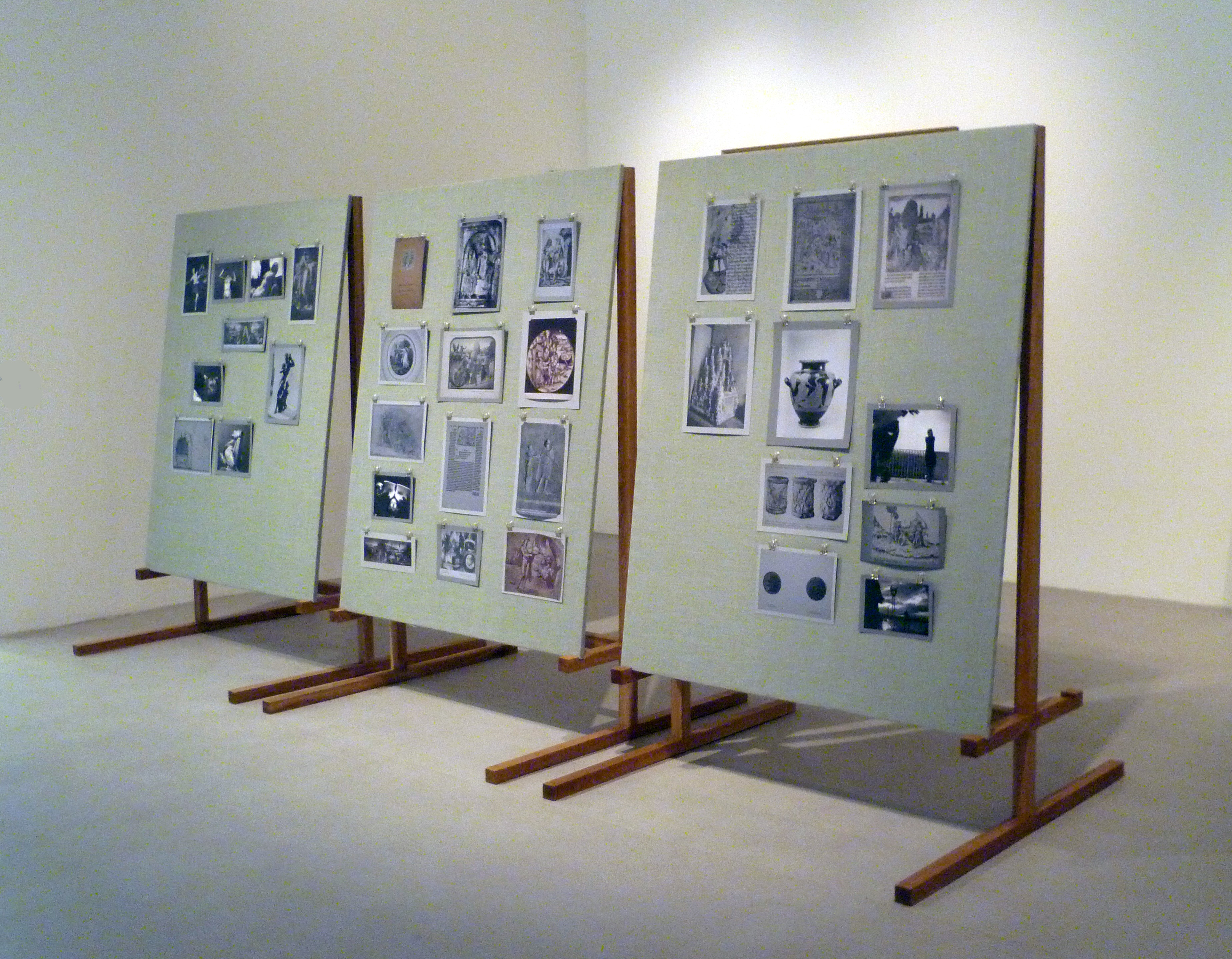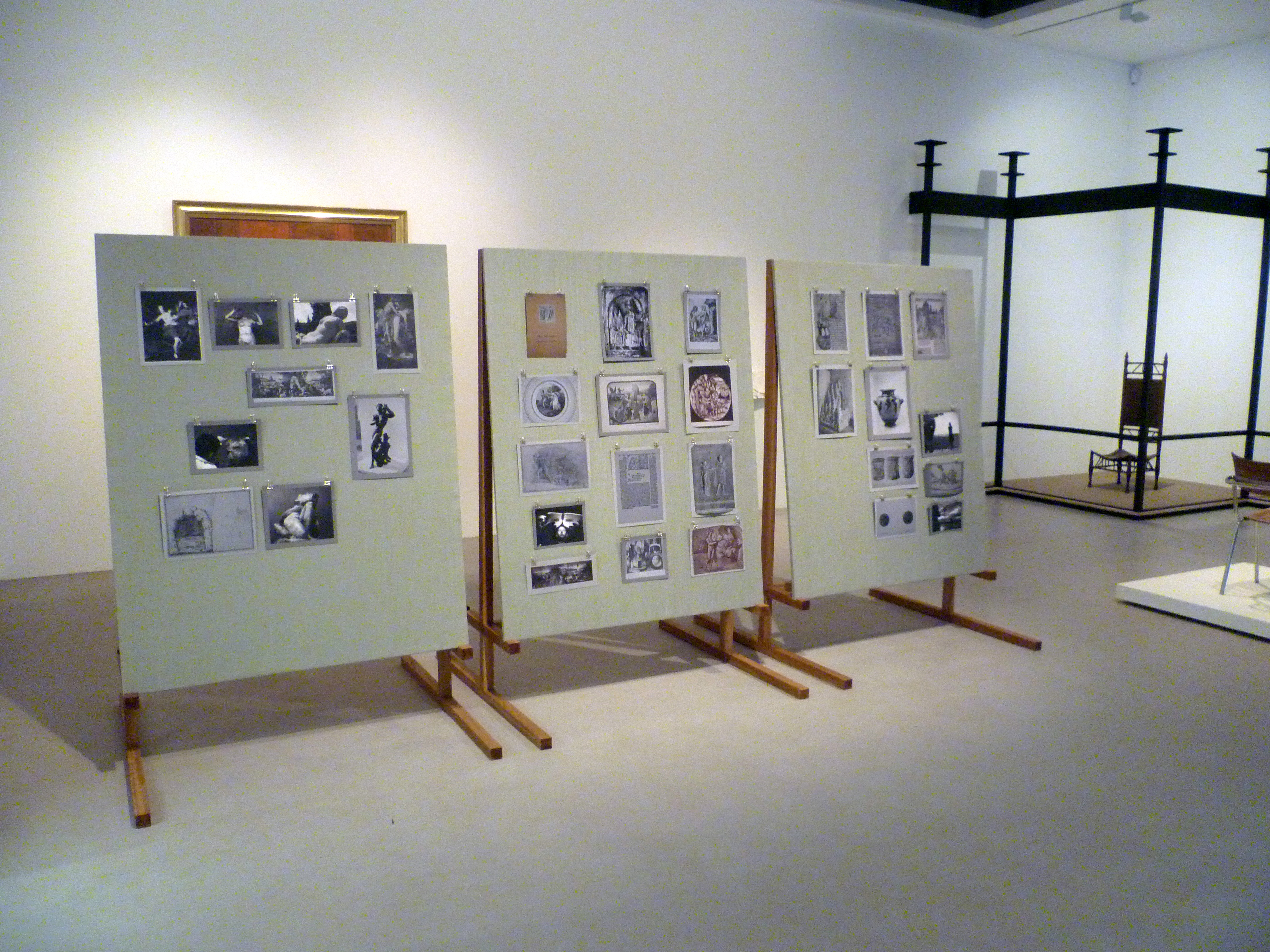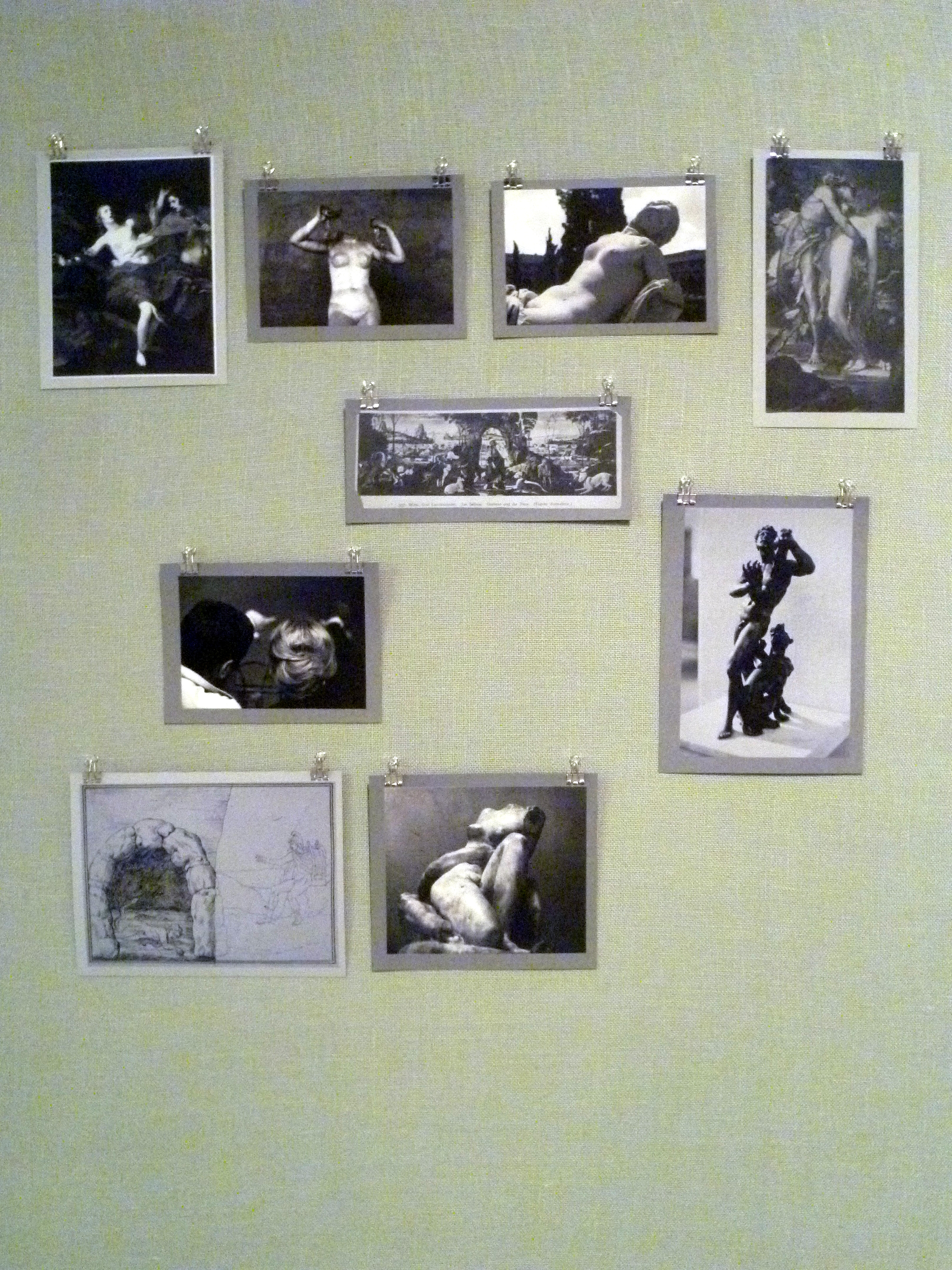The Man Who Looked Back
2010
Oak Display Stands; Hessian-covered display screens; Archive Photographs and Film Stills mounted on Card; Clips; Pins
This work also emerged from a system of formal comparisons, and continues my fascination with the work of the German art historian Aby Warburg, and how his method of displaying images might suggest the making new art works as much as the consideration of old ones.
Warburg was a member of an immensely wealthy Jewish banking family, who turned his back on tradition and inheritance in order to study (largely Catholic) art. He used his wealth to amass an enormous personal library in Hamburg, along with a collection of photographic images of artworks from around the world, and across human history, at a time when such imagery was not freely available. Warburg gathered together various of these photographs, each mounted on card, and placed them in relation to one another on hessian-covered boards in his library, in order to explore how certain forms or gestures might be found on a Cretan burial stone and a Renaissance Florentine canvas, say, despite their being no actual influence or historic connection between the two. These displays, which he termed the ‘Mnemosyne Atlas’, were not permanent, although photographic records of some of the ‘constellations’ remain.
Warburg was interested in ‘looking back’, and in the recurrence of certain physical gestures, and so copies of a number of images from the Warburg Institute photographic library were obtained which related to the myth of Orpheus and Eurydice, a story full of gesture, and in which the consequences of looking back are tragic rather than contemplative. Alongside these, I have placed stills taken from Chris Marker's 1963 masterpiece, La Jetée, which, I would suggest, might also be considered a version of the Orpheus myth, albeit here the return to the loved one results in the death of the man, rather than the woman. All of these images were displayed in the manner of Warburg's ‘Mnemosyne Atlas’.
Commissioned by Camden Art Centre for the exhibition Never the Same River (Possible Futures, Probable Pasts), curated by Simon Starling.
2010
Oak Display Stands; Hessian-covered display screens; Archive Photographs and Film Stills mounted on Card; Clips; Pins
This work also emerged from a system of formal comparisons, and continues my fascination with the work of the German art historian Aby Warburg, and how his method of displaying images might suggest the making new art works as much as the consideration of old ones.
Warburg was a member of an immensely wealthy Jewish banking family, who turned his back on tradition and inheritance in order to study (largely Catholic) art. He used his wealth to amass an enormous personal library in Hamburg, along with a collection of photographic images of artworks from around the world, and across human history, at a time when such imagery was not freely available. Warburg gathered together various of these photographs, each mounted on card, and placed them in relation to one another on hessian-covered boards in his library, in order to explore how certain forms or gestures might be found on a Cretan burial stone and a Renaissance Florentine canvas, say, despite their being no actual influence or historic connection between the two. These displays, which he termed the ‘Mnemosyne Atlas’, were not permanent, although photographic records of some of the ‘constellations’ remain.
Warburg was interested in ‘looking back’, and in the recurrence of certain physical gestures, and so copies of a number of images from the Warburg Institute photographic library were obtained which related to the myth of Orpheus and Eurydice, a story full of gesture, and in which the consequences of looking back are tragic rather than contemplative. Alongside these, I have placed stills taken from Chris Marker's 1963 masterpiece, La Jetée, which, I would suggest, might also be considered a version of the Orpheus myth, albeit here the return to the loved one results in the death of the man, rather than the woman. All of these images were displayed in the manner of Warburg's ‘Mnemosyne Atlas’.
Commissioned by Camden Art Centre for the exhibition Never the Same River (Possible Futures, Probable Pasts), curated by Simon Starling.



